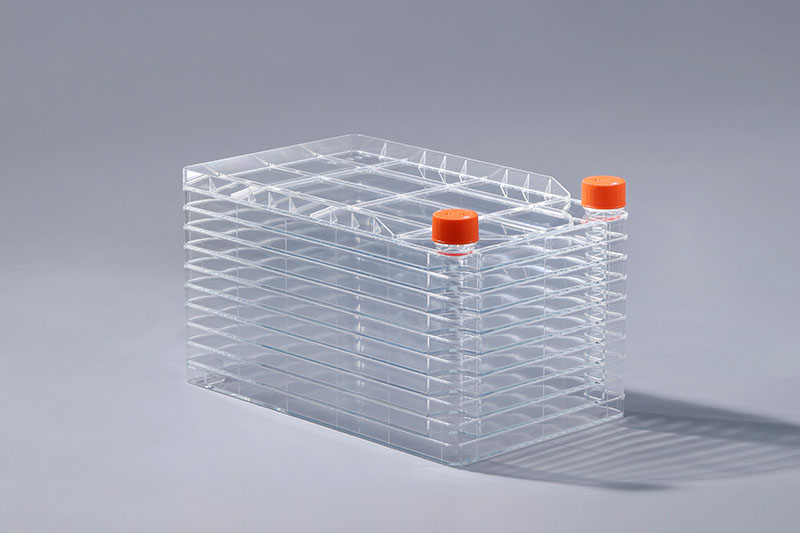Cell factories are commonly used consumables in large-scale cell culture, and are widely used in adherent cells. It is processed from raw polystyrene, which is inherently hydrophobic, and adherent cells need to attach to the surface of the consumable to grow. In order to improve the adherence performance of the product, it will be treated with TC on the surface to introduce hydrophilic groups to meet the growth requirements of adherent cells. So, how to detect the TC treatment effect of consumables?
The untreated polystyrene surface is uncharged and non-hydrophilic, and its ability of cell adsorption and protein binding is very poor, so that cell adsorption and growth are very weak and unstable. After TC treatment, it is a negatively charged and hydrophilic polystyrene surface, and its ability of cell adsorption and protein binding is very stable, which is suitable for cell adherent culture.
To detect the TC treatment effect of the cell factory, a professional instrument - a contact angle tester is required. The contact angle refers to a droplet on a solid horizontal plane. At the solid-liquid-gas three-phase junction point on the solid surface, the gas-liquid interface and the solid-liquid interface two tangents sandwich the liquid phase. formed angle. The contact angle tester is mainly used to measure the contact angle of liquid to solid, that is, the wettability of liquid to solid. It can measure the contact angle of various liquids to various materials. To test the effect of TC treatment, three drops of pure water need to be dropped on the treated monolithic surface, and a contact angle meter is used to detect the intersection angle. The intersection angle between the water droplet and the culture surface should not be greater than 39 degrees.
The above are the methods and instruments used to detect the effect of TC treatment in the cell factory. Whether cells can adhere to the wall is related to their later growth and proliferation. High-quality consumables can provide better growth conditions for cells, thereby ensuring the smooth progress of cell culture.
The FAI climbed 5.9 percent year-on-year in the first 11 months of 2018, quickening from the 5.7-percent growth in Jan-Oct, the National Bureau of Statistics (NBS) said Friday in an online statement.
The key indicator of investment, dubbed a major growth driver, hit the bottom in August and has since started to rebound steadily.
In the face of emerging economic challenges home and abroad, China has stepped up efforts to stabilize investment, in particular rolling out measures to motivate private investors and channel funds into infrastructure.
Friday's data showed private investment, accounting for more than 60 percent of the total FAI, expanded by a brisk 8.7 percent.
NBS spokesperson Mao Shengyong said funds into weak economic links registered rapid increases as investment in environmental protection and agriculture jumped 42 percent and 12.5 percent respectively, much faster than the average.
In breakdown, investment in high-tech and equipment manufacturing remained vigorous with 16.1-percent and 11.6-percent increases respectively in the first 11 months. Infrastructure investment gained 3.7 percent, staying flat. Investment in property development rose 9.7 percent, also unchanged.
 English
English



















































